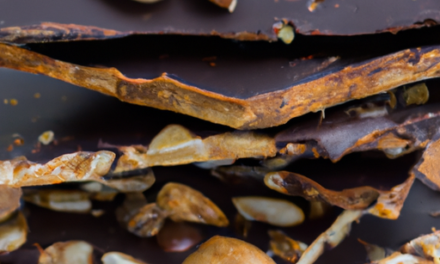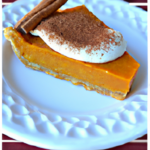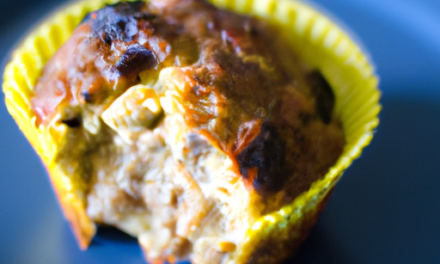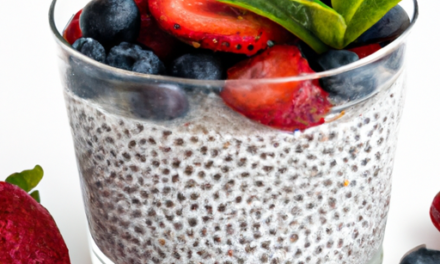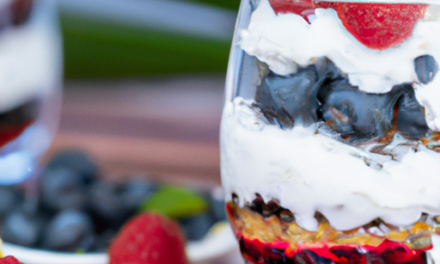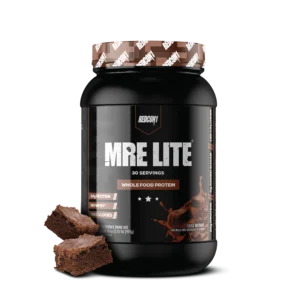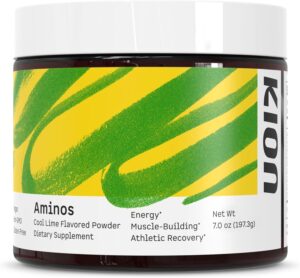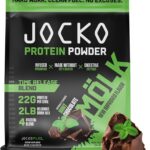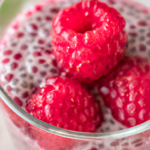
Stuffed Bell Peppers
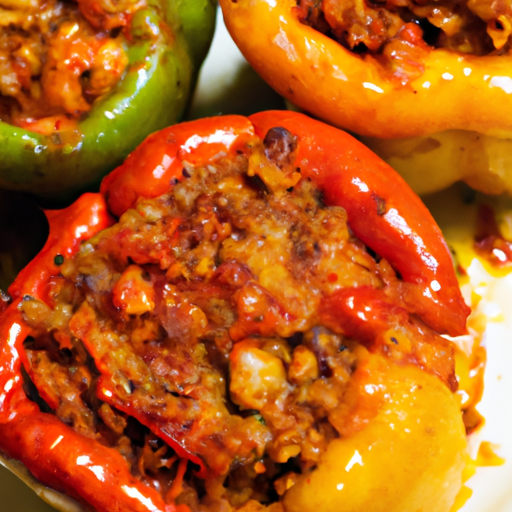
Are you looking for a delicious and healthy meal to add to your recipe collection? Look no further than Stuffed Bell Peppers! These Paleo-friendly recipes are not only packed with flavor, but also offer a range of health benefits to help you reach your goals. Whether you’re following a specific diet or simply looking for a nutritious meal option, Stuffed Bell Peppers are the perfect choice. With their vibrant colors and mouthwatering fillings, these stuffed peppers will leave you satisfied and coming back for seconds. So grab your apron and get ready to embark on a culinary adventure with Stuffed Bell Peppers!
Choosing the Bell Peppers
Selecting the right size and shape
When it comes to choosing bell peppers for stuffing, size and shape are important factors to consider. Opt for bell peppers that are large enough to hold a generous amount of filling without splitting open during the cooking process. Look for peppers that have a wide and sturdy shape, as they will be easier to stuff and handle. It is also worth noting that bell peppers come in various colors, including red, yellow, orange, and green, each with its own distinct flavor profile. Consider the size and shape that best suits your recipe and personal preference.
Picking the freshest peppers
To ensure the best taste and texture for your stuffed bell peppers, it is essential to pick the freshest ones available. When selecting peppers, look for ones that have smooth and shiny skin, free from wrinkles or blemishes. The pepper should feel firm and crisp when gently squeezed. Avoid peppers that have soft spots or discoloration, as these are signs of decay. Fresher peppers not only provide a better eating experience but also retain more nutrients and flavors in the final dish.
Considering color variations
Bell peppers come in a range of vibrant colors, each with its own characteristic taste and sweetness. Green bell peppers have a slightly bitter and robust flavor, making them a popular choice for savory dishes. On the other hand, red, yellow, and orange bell peppers are sweeter and milder in taste. These colorful options can add a delightful visual appeal to your stuffed peppers, as well as a subtle sweetness to complement the filling. Consider the flavor profile you desire and choose the color that best complements your chosen filling and overall dish.
Preparing the Peppers
Washing the peppers
Before beginning the preparation process, it’s important to wash the bell peppers thoroughly. Rinse each pepper under cool running water, rubbing gently to remove any dirt or residue that may be present on the skin. Pay extra attention to the crevices near the stem and base where dirt can often accumulate. Once washed, pat the peppers dry with a clean kitchen towel or paper towels.
Removing the stem and seeds
To prepare the bell peppers for stuffing, start by removing the stem. Using a sharp knife, carefully cut around the stem in a circular motion, creating a small hole. Gently pull on the stem to remove it, ensuring not to damage the pepper. Once the stem is removed, cut the pepper in half vertically. With a spoon or your fingers, scrape out the seeds and white membrane from each half. This step helps remove any bitterness and prepares the peppers for the filling.
Blanching or roasting the peppers
Blanching or roasting the bell peppers before stuffing can enhance their flavor and texture. Blanching involves briefly immersing the peppers in boiling water and then transferring them to an ice bath to cool. This method softens the peppers slightly and makes them easier to stuff. Roasting the peppers in the oven, on the other hand, adds a smoky and charred flavor to the final dish. Choose the method that best suits your preference and recipe requirements.
Filling Options
Classic beef and rice filling
The classic beef and rice filling is a timeless favorite for stuffed bell peppers. To prepare this filling, start by cooking ground beef in a skillet over medium heat until browned. Drain any excess fat, if necessary. Add cooked rice, diced onions, minced garlic, and a combination of herbs and spices such as oregano, paprika, salt, and pepper. Mix well to combine, and your classic beef and rice filling is ready to be stuffed into the bell peppers.
Vegetarian quinoa and black bean filling
For those following a vegetarian or plant-based diet, a quinoa and black bean filling is a fantastic option. Begin by cooking quinoa according to package instructions, and set it aside. In a separate skillet, sauté diced onions, minced garlic, and bell peppers until softened. Add canned black beans, cooked quinoa, and a blend of cumin, chili powder, salt, and pepper. Stir everything together until well combined, and your flavorful vegetarian filling is ready to be stuffed into the bell peppers.
Chicken and corn fiesta filling
If you’re looking to add a touch of fiesta to your stuffed bell peppers, a chicken and corn filling will do the trick. Start by cooking boneless, skinless chicken breasts in a skillet over medium heat until they are cooked through. Once cooked, shred the chicken using two forks. In a separate bowl, combine the shredded chicken with canned corn, diced tomatoes, diced green chilies, and a sprinkle of chili powder, cumin, salt, and pepper. Mix well, and your zesty chicken and corn fiesta filling is ready to be packed into the bell peppers.
Preparing the Filling
Cooking the protein
Before preparing the filling, it is important to cook the protein component thoroughly. Whether using ground beef, chicken, or opting for a vegetarian filling, ensure that the protein is cooked to the appropriate temperature for safe consumption. This step not only ensures the safety of the dish but also enhances the flavor and texture of the filling.
Preparing the grain or legume
If your chosen filling includes grains or legumes, such as rice, quinoa, or black beans, be sure to prepare them according to the package instructions before combining them with the other ingredients. Cooking the grain or legume separately helps ensure it is cooked evenly and contributes to the overall taste and texture of the filling.
Combining the ingredients
Once all individual components of the filling are prepared, it’s time to combine them. In a mixing bowl, add the cooked protein, grain or legume, and any additional diced vegetables or herbs. Gently mix everything together until well combined. This step allows the flavors to meld and ensures an even distribution of ingredients throughout the bell peppers.
Enhancing Flavors
Adding herbs and spices
To elevate the taste of your stuffed bell peppers, don’t be shy with herbs and spices. Depending on your chosen filling, consider adding a variety of herbs such as basil, parsley, cilantro, or oregano. Spices like cumin, paprika, chili powder, or garlic powder can add depth and complexity to the flavors. Experiment with different combinations until you find the perfect balance that suits your taste preferences.
Incorporating diced vegetables
Adding diced vegetables to the filling not only boosts nutrition but also adds texture and flavor. Consider incorporating vegetables like onions, garlic, carrots, celery, or zucchini. Sauté these vegetables in a skillet until they are tender before adding them to the filling mixture. The added vegetables will provide a delightful crunch and enhance the overall taste of the stuffed bell peppers.
Using a flavorful sauce or broth
To infuse additional flavor into your stuffed bell peppers, consider using a flavorful sauce or broth. Whether it’s a homemade tomato sauce, enchilada sauce, or a vegetable or chicken broth, the liquid will help keep the peppers moist during the baking process. Pour the sauce or broth into the baking dish, surrounding the peppers, to create a rich and flavorful cooking environment.
Stuffing the Peppers
Spoon the filling into the peppers
Once the filling is well combined, it’s time to stuff the peppers. Using a spoon, carefully fill each bell pepper half with the prepared filling mixture. Gently pack the filling into each pepper, ensuring they are evenly filled. Be generous with the filling, as it will cook down slightly during the baking process. Continue stuffing all the peppers until the filling is used up.
Pressing the filling down
After the peppers are filled, press the filling down slightly to make sure it is compacted and evenly distributed within the pepper. This step helps ensure that the peppers cook uniformly and helps prevent any air pockets or gaps within the filling.
Mounding the filling on top
For a visually appealing presentation, consider mounding the filling slightly on top of each bell pepper. This not only adds an attractive touch but also allows for an ample amount of filling in each bite. Gently shape the filling into a mound, making sure it is secure and does not fall off during the baking process.
Baking the Stuffed Peppers
Choosing the right baking dish
Selecting the appropriate baking dish is crucial for successful stuffed pepper preparation. Use a baking dish that is large enough to hold all the stuffed peppers without overcrowding. A dish with high sides helps prevent any sauce or broth from spilling over during baking. Ensure that the dish is oven-safe and able to withstand the required temperature.
Adding a liquid to the dish
To keep the stuffed peppers moist and tender during baking, it’s essential to add a liquid to the baking dish. This can be the flavorful sauce or broth mentioned earlier, or even just a bit of water. The liquid creates a steamy environment that helps cook the peppers evenly and prevents them from drying out.
Covering with foil or leaving uncovered
Whether to cover the baking dish with foil or leave it uncovered depends on personal preference and the desired outcome for the peppers. Covering the dish with foil helps retain moisture, preventing the peppers from drying out. This method also allows the peppers to steam and cook more quickly. Leaving the dish uncovered, on the other hand, can create a slightly charred and roasted effect on the peppers. It’s recommended to follow the recipe instructions or experiment with both methods to achieve the desired texture and flavor.
Cooking Time and Temperature
Determining the appropriate cooking time
The cooking time for stuffed bell peppers can vary depending on various factors, including the size and thickness of the peppers, as well as the specific filling used. As a general guideline, stuffed bell peppers are typically baked at a moderate temperature, around 375°F (190°C), for approximately 30-45 minutes. However, it is crucial to use a meat thermometer to determine when the internal temperature of the filling reaches a safe temperature for consumption.
Monitoring the internal temperature
To ensure that the filling is cooked thoroughly, it’s important to monitor the internal temperature of the stuffed bell peppers. Insert a meat thermometer into the center of a filled pepper, making sure it reaches the filling. Different fillings have different safe internal temperatures, so refer to specific food safety guidelines for the chosen filling. The filling should reach the recommended temperature to ensure it is safe to eat.
Adjusting time and temperature for different fillings
If you opt for a filling that requires longer cooking times, such as raw ground meat that needs to be fully cooked, you may need to adjust the baking time and temperature accordingly. It’s important to ensure that the filling is cooked through while still maintaining the desired texture of the pepper. Keep a close eye on the peppers throughout the baking process and make necessary adjustments to achieve the perfect balance between a tender pepper and a fully cooked filling.
Garnishing and Serving
Sprinkling with cheese or breadcrumbs
For a finishing touch and added visual appeal, consider topping the stuffed bell peppers with cheese or breadcrumbs. Sprinkle a generous amount of shredded cheese, such as cheddar, mozzarella, or Parmesan, onto each pepper before baking. As the peppers bake, the cheese will melt and create a golden and bubbly crust. Similarly, breadcrumbs can be lightly sprinkled over the filling for a crispy and textured topping.
Adding fresh herbs for a finishing touch
To elevate the flavors and add a pop of freshness to your stuffed bell peppers, consider garnishing with fresh herbs. Chopped parsley, basil leaves, or cilantro can be sprinkled over the baked peppers just before serving. The aromatic herbs not only add vibrant color but also provide a burst of fragrance that enhances the overall taste experience.
Plating and presentation ideas
When it comes to plating and presenting your stuffed bell peppers, there are numerous options to consider. One simple idea is to arrange the peppers on a serving platter, with the filling facing upwards and any sauce or broth pooled around them. This showcases the vibrant colors of the peppers and allows guests to see the beautiful filling. Additionally, consider garnishing the platter with a sprig of fresh herbs or a drizzle of sauce for added visual interest.
Storage and Reheating
Properly storing leftover stuffed peppers
If you find yourself with leftover stuffed peppers, it’s important to store them properly to maintain their freshness and flavor. Allow the peppers to cool completely before transferring them to an airtight container. Ensure there is minimal exposure to air to prevent any moisture loss. Label the container with the date and refrigerate it within two hours of cooking.
Refrigerating and freezing tips
Stuffed peppers can be stored in the refrigerator for up to 3-4 days. To freeze them, wrap each individual pepper tightly in plastic wrap and then place them in a freezer-safe bag or container. Frozen stuffed peppers can be stored for up to 3 months. When ready to enjoy, thaw the peppers in the refrigerator overnight before reheating.
Reheating methods and precautions
To reheat stuffed bell peppers, there are several methods you can choose from. One option is to microwave single servings for 2-3 minutes, or until heated through. Alternatively, you can place the peppers in a preheated oven at 350°F (175°C) for 15-20 minutes until warmed. When reheating, be cautious not to overcook the peppers, as they may become mushy.
It’s important to note that reheating previously cooked protein, such as ground beef or chicken, should be done at a minimum internal temperature of 165°F (74°C) for food safety reasons. Always use a meat thermometer to ensure the filling has reached the recommended temperature.





